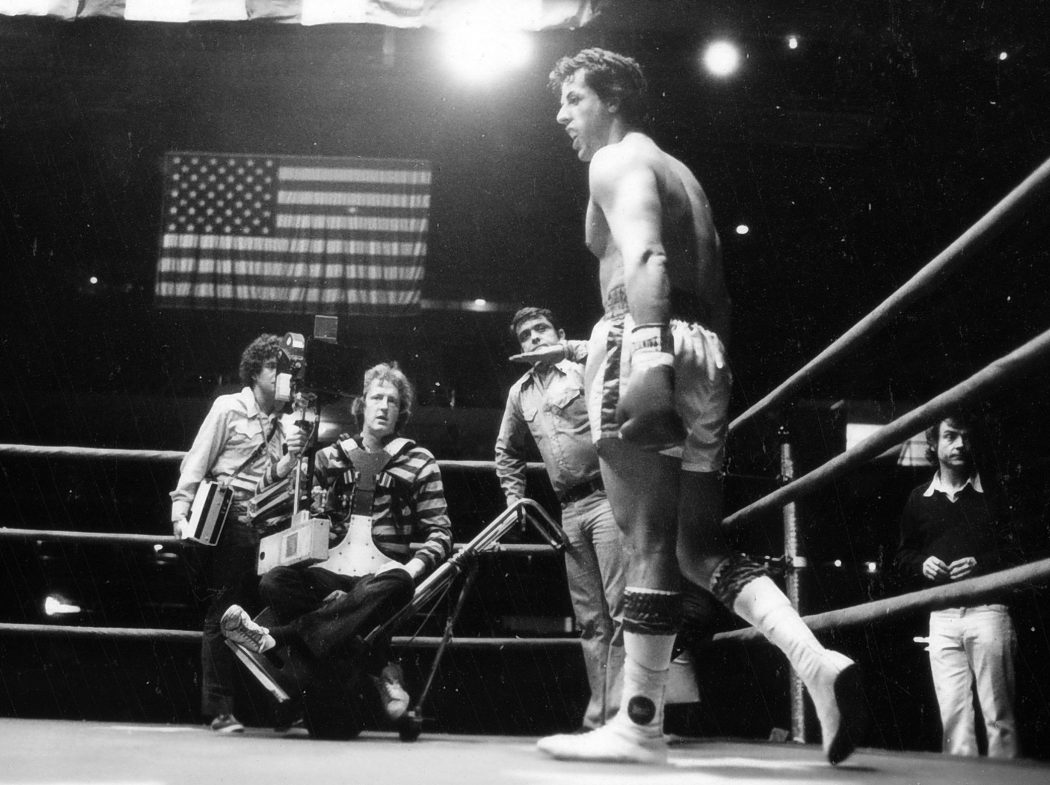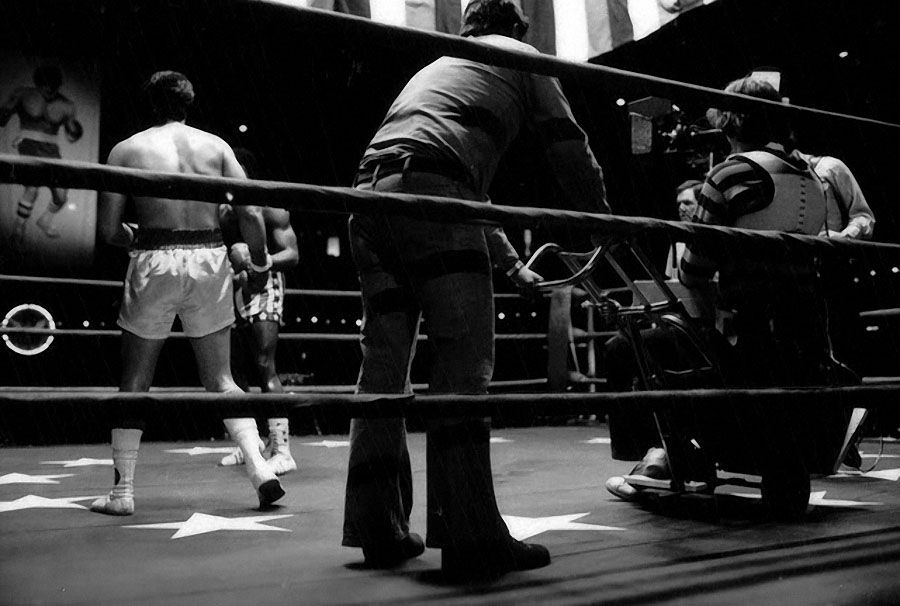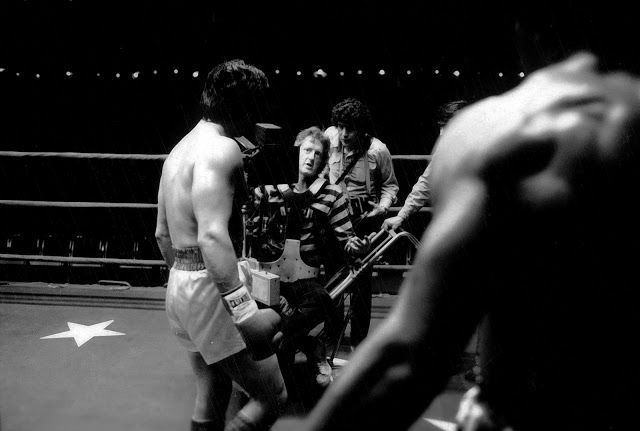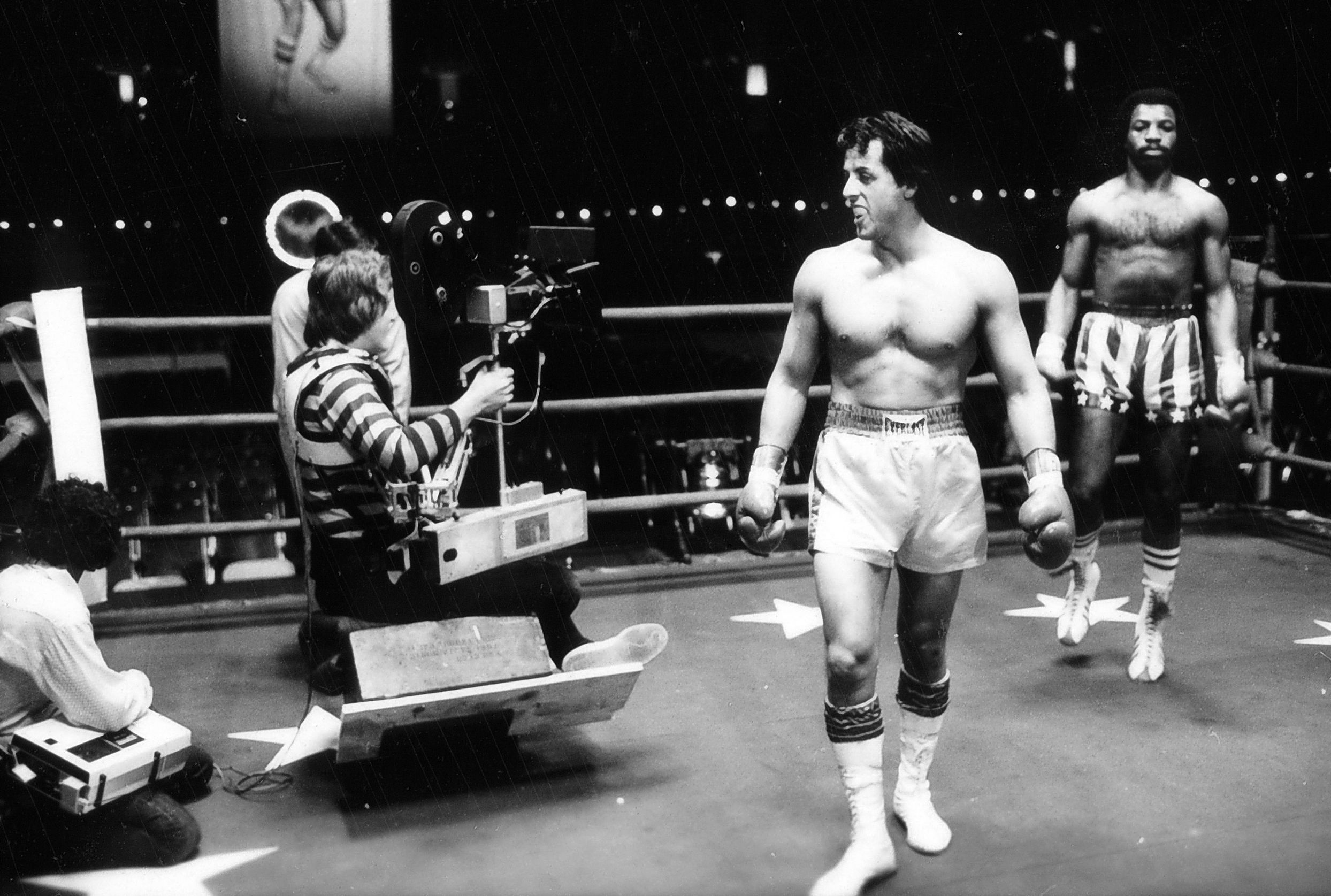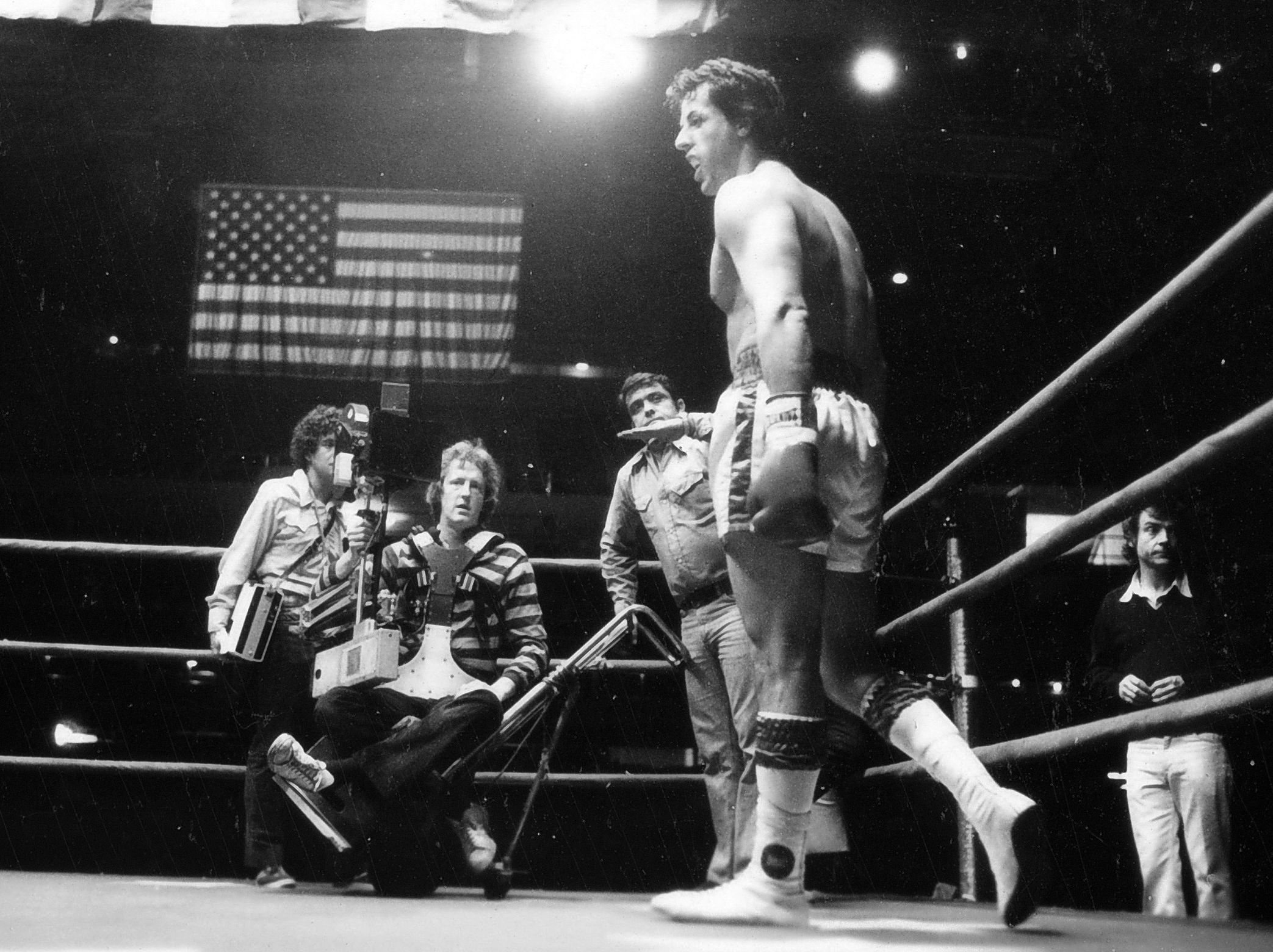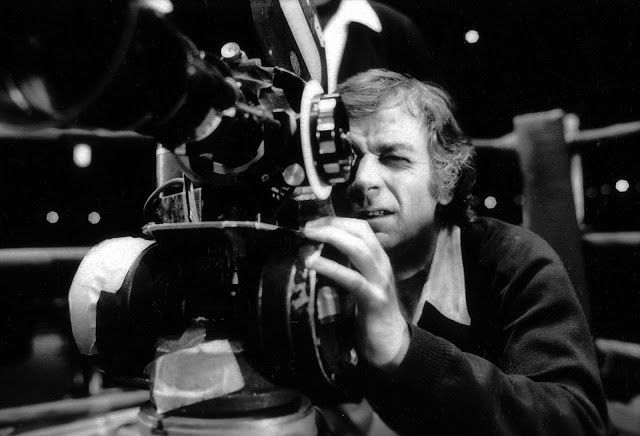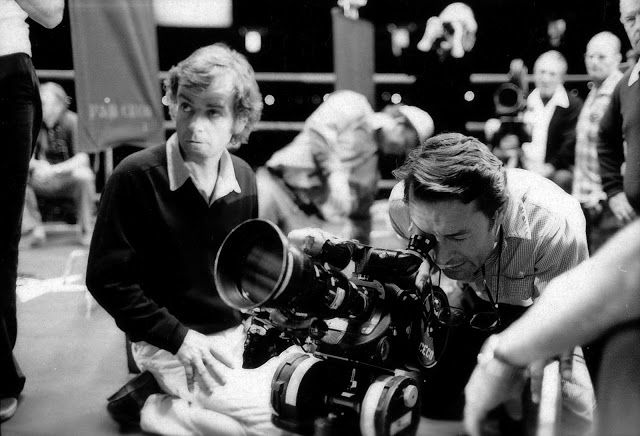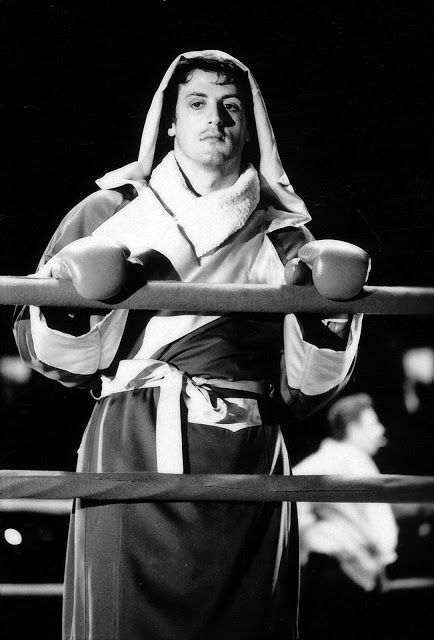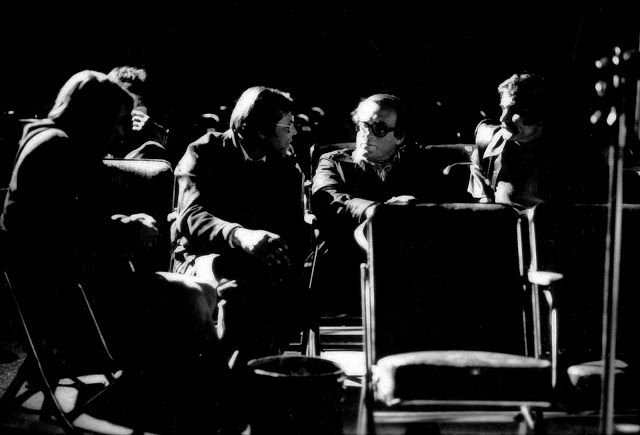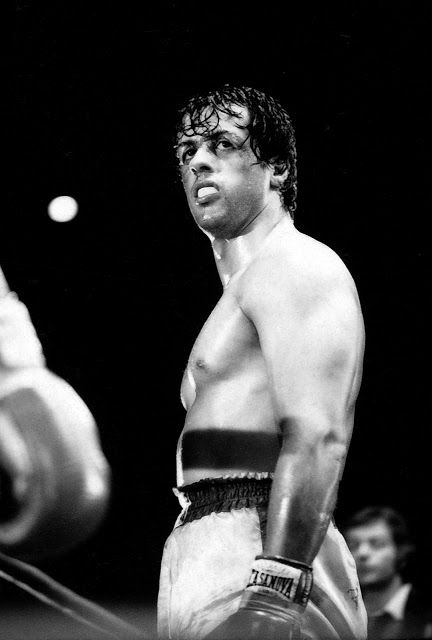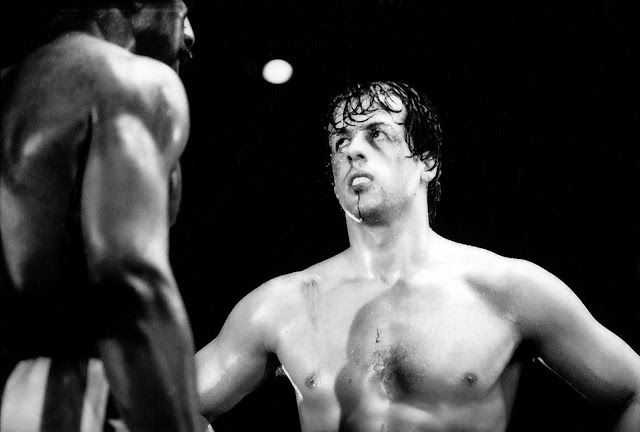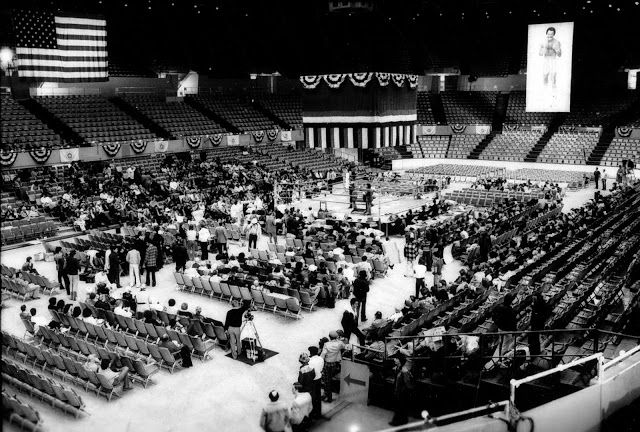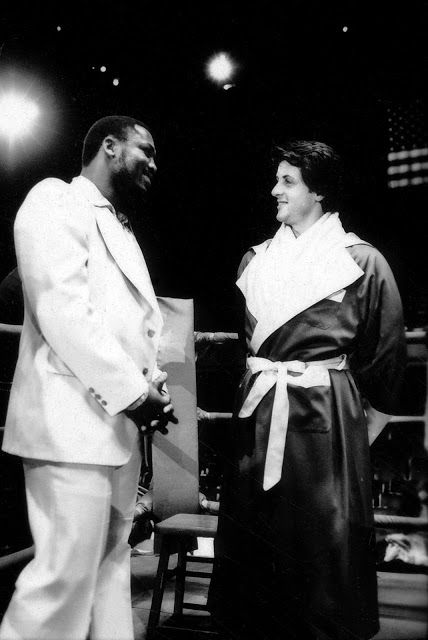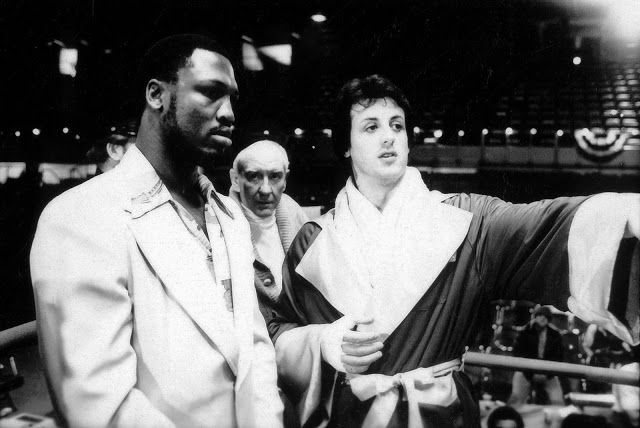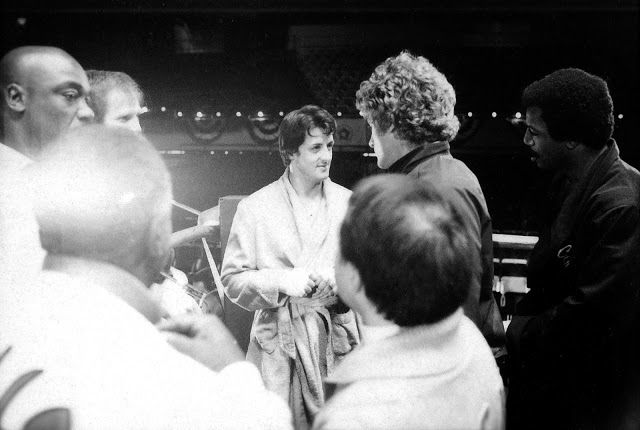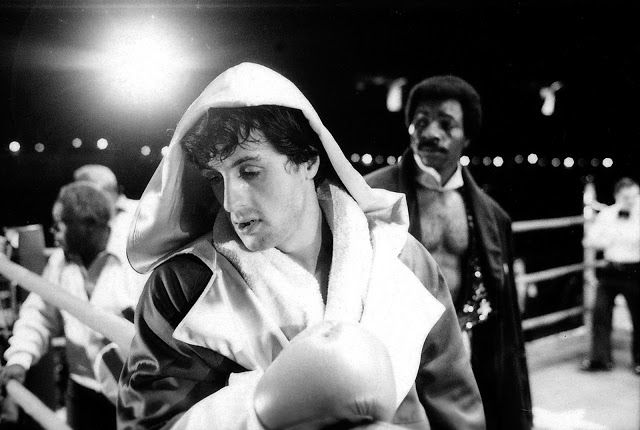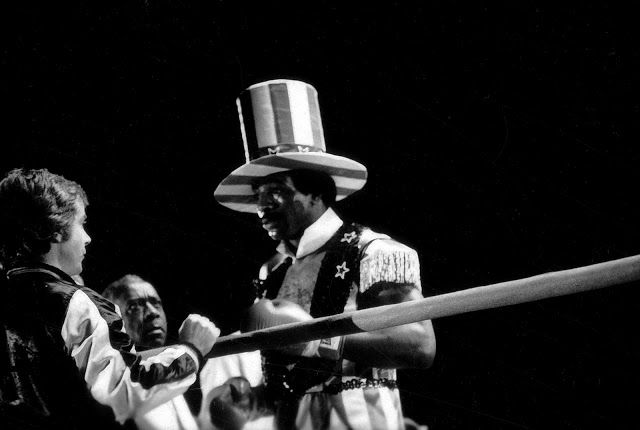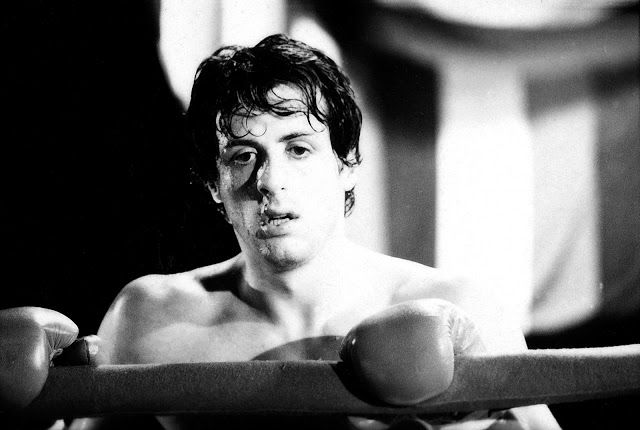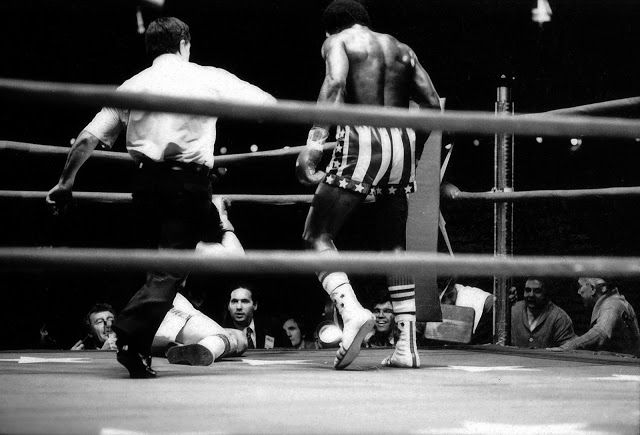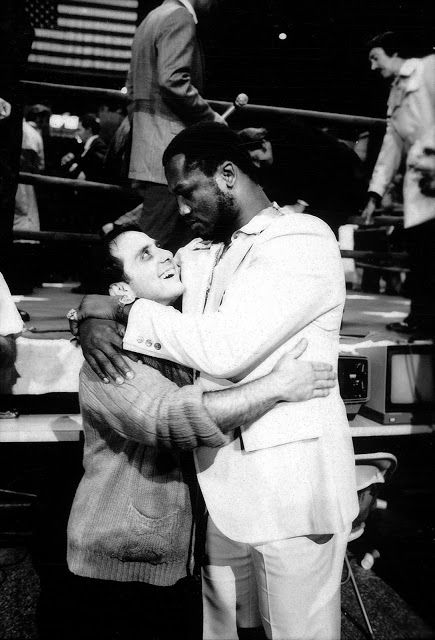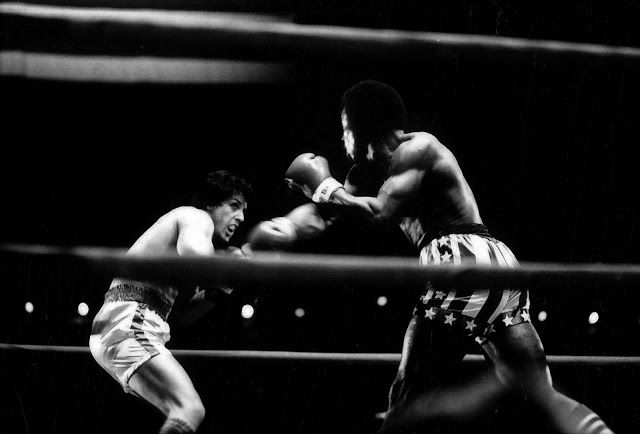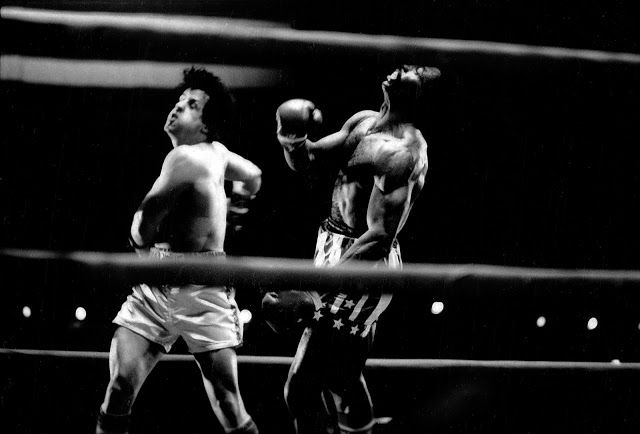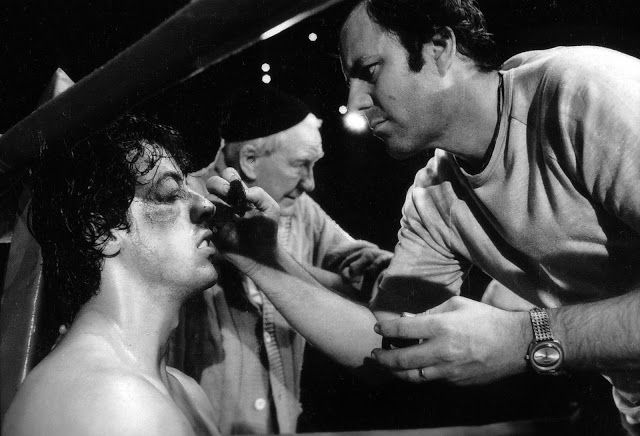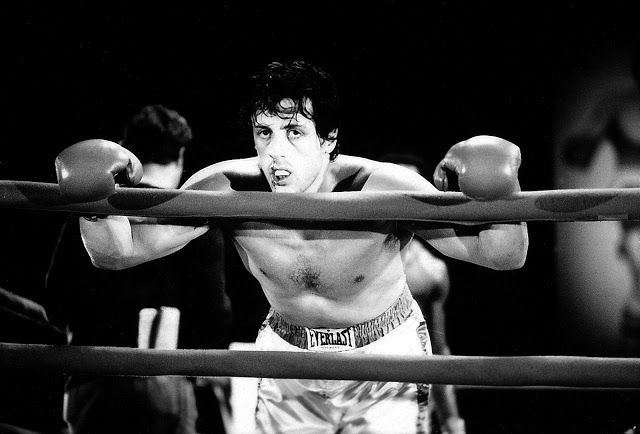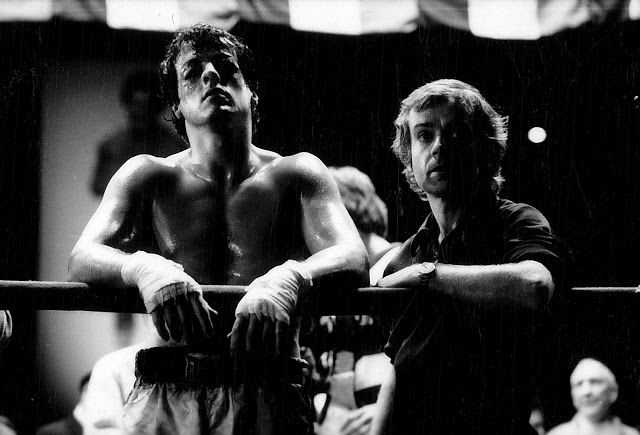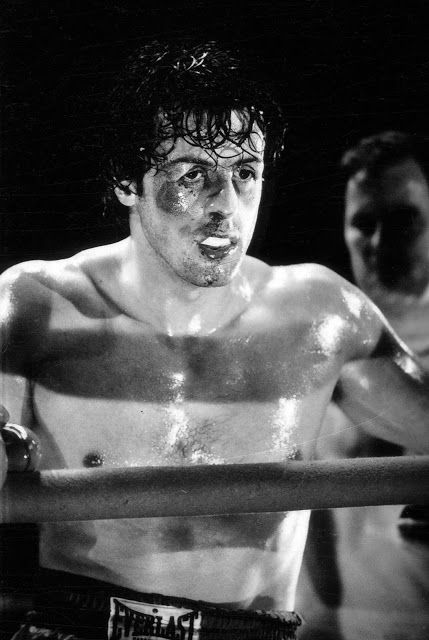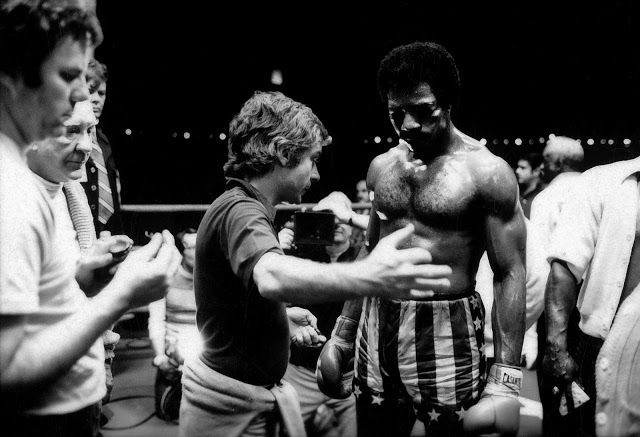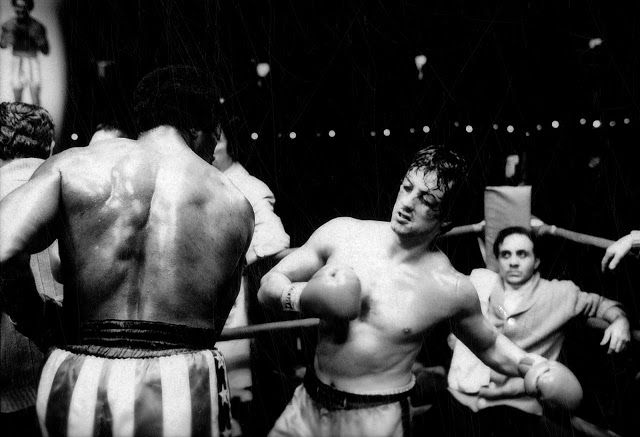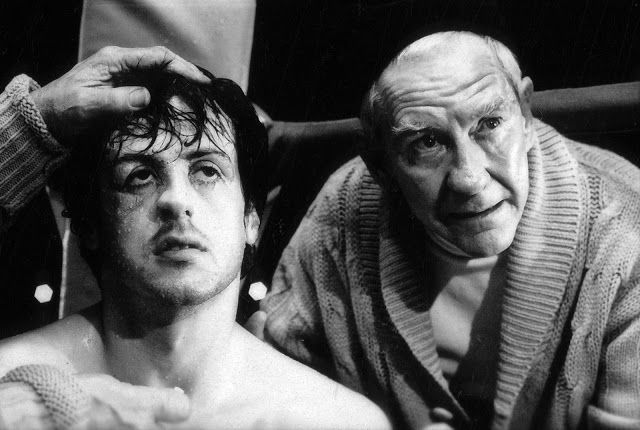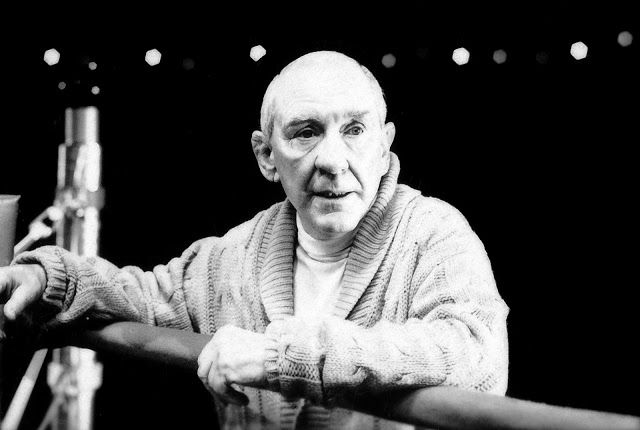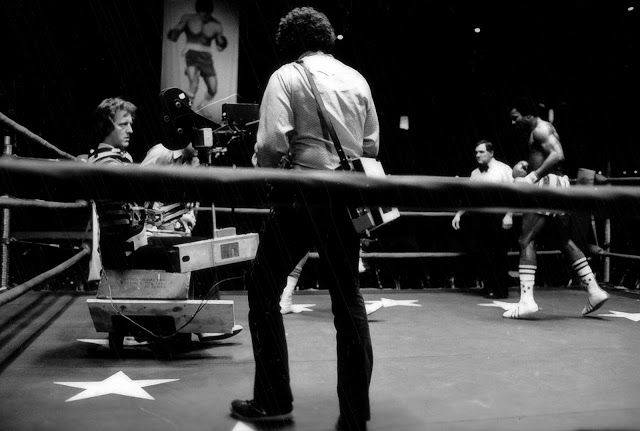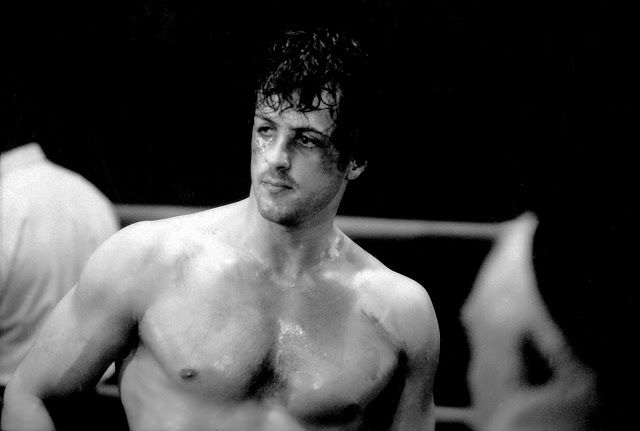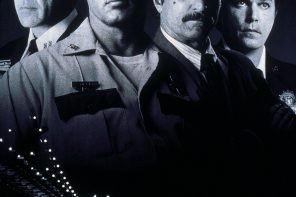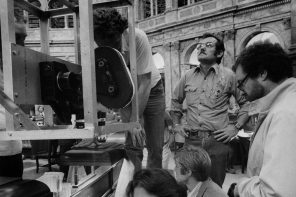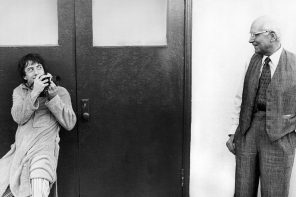By Sven Mikulec
Sylvester Stallone’s breakout role and the whole process behind its development has become common knowledge. He was broke, his wife was pregnant, and he kept cruising around, knocking on doors, ringing doorbells, trying to sell his script: a story of an unaccomplished, could-have-been boxing champion with a heart of a lion. Stallone kept pushing it, obviously aware he had something special in his hands, refusing solid money because he insisted on playing the lead role. After he passe on two of their offers, United Artists finally decided to take a risk and went along for Stallone’s ride of a lifetime. Made for only a million dollars, shot in a month, created without a major film star, Rocky proved to be a huge success, and all those years of Sisyphus’ labor paid off quite nicely for the Italian Stallion, who began his career in the now legendary softcore adult film back in 1970. Rocky is not only an inspiring sports drama shouting out at your face that anything’s possible if you put enough effort into accomplishing it. The quality of the film—absolutely indisputable—lies in its ability to use common motifs and expected plot points to maximum effect, without ever crossing the line of being corny. The story is simple, the characters are not much more complex, but the film easily strikes the right chords in all of us, as we fall for the characters, as we fully believe in everything we’re seeing, even if we’re very well aware of the somewhat naïve basis of the entire plot. Whether or not a washed-up boxer from Philly would really get the chance for the title doesn’t matter one bit to us, just like it didn’t matter in Warrior a couple of years ago. Rocky, just like its protagonist, has heart, soul and enough strength in its muscles to deliver a significant blow to our stomach. This film is the story of Sly Stallone, who endured and struggled extremely hard to get his film made just the way he wanted to. The film, therefore, is Stallone, as much as it’s necessary to applaud all the other important pieces of the puzzle.
Director John G. Avildsen did a great job balancing the tight budget and carving Stallone’s story into the most famous sports film ever. Bill Conti’s score is marvelous: who isn’t familiar with the wonderful Gonna Fly Now? Burgess Meredith, Talia Shire, Carl Weathers and Burt Young heavily contribute in their supporting roles. And the man whom we shouldn’t forget is Garrett Brown, the father of the Steadicam, without which James Crabe’s iconic stairs shot would not be possible.
In his fascinating book called ‘Adventures in the Screen Trade,’ the great William Goldman paid his respect to Stallone, calling Rocky a marvelous, wonderful script. Such words from the mouth of a screenwriting legend are all the encouragement an artist needs and the highest possible praise a writer can get. By writing about what he’s familiar with, by opening up his heart to the world and by standing relentlessly and passionately by his project even when the odds were completely against him, Stallone crafted one of the most inspiring films ever seen.
Sylvester and I had the same vision, I think. And he was a starving actor. He wasn’t a big star. He was very cooperative and willing to try anything and not concerned with the size of his trailer, because there was no trailer. It was a joy working with him. He told me he wrote about 300 pages over the production, because we were constantly changing things and hopefully making it better. —John G. Avildsen
A monumentally important screenplay. Screenwriter must-read: Sylvester Stallone’s screenplay for Rocky [PDF]. (NOTE: For educational and research purposes only). The DVD/Blu-ray of the film is available at Amazon and other online retailers. Absolutely our highest recommendation.
 Loading...
Loading...
WILLIAM GOLDMAN ON ‘ROCKY’
“I’ll tell you who wrote a marvelous script once, Sylvester Stallone. Rocky’s a marvelous script. God, read it, it’s wonderful. It’s just got marvelous stuff. In Rocky, Sylvester Stallone has written a stunning moment which I’ll try and describe. Rocky, a second-rate club fighter, goes to his gym for the first time in the movie, and walks to the room where the lockers are. His particular lock is a combination type, so Rocky turns the dial one way, makes the second move, the third, then pulls the lock open. Only it’s still locked. He makes a face, spins the dial again, again goes through the combination. But it still won’t open. Now he does this great thing: he takes off his hat and pulls out a piece of paper that’s got the proper combination on it.
All right: what do we know about Rocky so far in this sequence? Well, he’s not the brightest and he’s not much at remembering numbers. But he’s not surly about it. He’s more sweet and resigned than mad; he just shrugs, gets the right combination from his hat, dials the right numbers. Only it still won’t open. And now he whirls, grabs the fire extinguisher off the near wall, and smashes the locker until it opens. So what do we know now? Just this: beneath that sweetness, there is a wild anger, and they both exist inside that same skin, and it’s that mixture of sweetness and fury that makes it possible for him to survive with the champion and for us to care so about it. The lock smashed, he yanks the door open and now we find out something more—the photos taped to the inside of the door are of black girls. Which means either that he likes black girls, which we didn’t know, or that he’s smashed into the wrong locker.
Then the attendant from the doorway tells the truth: Rocky’s stuff has been moved out, a black fighter has been given his place. In other words, Rocky’s so washed up he’s not even worth second-rate locker space in a second-rate gym. It’s a marvelously economic piece of writing Stallone has done—it set, at least for me, the character of Rocky for the rest of the film. It’s the moment when I really began to care for him. And it has, until the very end, no dialogue. Plus being totally excisable in terms of plot. All that needed to happen was that the attendant say to Rocky as he entered the gym, “Oh, we moved your stuff out of your locker.” But then we wouldn’t see Rocky’s private moments, wouldn’t root for him the way we ultimately do. I don’t know the proper definition of a screenplay, but it might be anything you can come up with to involve an audience in any way you can.”
—William Goldman on Rocky
A CONVERSATION WITH SYLVESTER STALLONE
Sylvester Stallone tells how Rocky was made.
You wrote Rocky in three and a half furious days, in a continuous ‘heat,’ with your wife typing the manuscript. Is the legend true?
Yes, it is. I had this opportunity with Chartoff and Winkler, and I wasn’t going to let it slip by. I was young, and I had an incredible amount of energy, and I wrote it in a fury. I was very excited about the whole thing. I had a feel for the streets, and I loved films like Mean Streets, and Marty, and On the Waterfront, and I felt inspired.
Now when you first gave the new script to Chartoff and Winkler, they apparently suggested a few changes?
That’s right. The original draft was only about eighty-nine pages long, and it was rather hastily thrown together. At that point, Rocky wasn’t really Rocky yet. He was much harder, more caustic, and his face was heavily damaged from all the blows he’d taken. As for Adrian, she was Jewish in the first draft, with a brother and a mother, and the mother couldn’t stand Rocky for all kinds of reasons: he was Italian, he was poor, he was semi-punchy, and he was a low-level gangster. Also, the mother really didn’t want her daughter to get married and leave her. She wanted tokeep her right where she was, as a kind of permanent indentured servant.
So, at that point, with the suggestions of the producers, the two main characters started to change. Rocky became a much nicer guy, rather naive, even sweet in a way, and he was much less of a thug, and more on the fringes of the mob. Eventually, Adrian also became Italian, and her mother was cut out, and the brother took over the role of the needy relative who didn’t want to lose her—and who only suggests that Rocky take his sister out on a date because he wants a job.
I’ve read that Mickey was a blatant racist in the first draft?
He was, and it was very overdone, so I changed it. —A conversation with Sylvester Stallone
A rare look at Sylvester Stallone choreographing the boxing match from the original Rocky film with Carl Weathers.
GARRETT BROWN ON ‘ROCKY’
In this great short documentary, Garrett Brown taks about Rocky (and the famous ‘stairs’ shot), Bound For Glory, and of course his revolutionary invention—the Steadicam. A must see for anyone whose passion is cinematography.
From about a dozen of original contact sheets, here’s a behind the scenes look at the shooting of the famous fight that ends the 1976 film. Photographed by Elliot Marks © Chartoff-Winkler Productions, United Artists. Courtesy of the edit room floor. Intended for editorial use only. All material for educational and noncommercial purposes only.
If you find Cinephilia & Beyond useful and inspiring, please consider making a small donation. Your generosity preserves film knowledge for future generations. To donate, please visit our donation page, or donate directly below:

